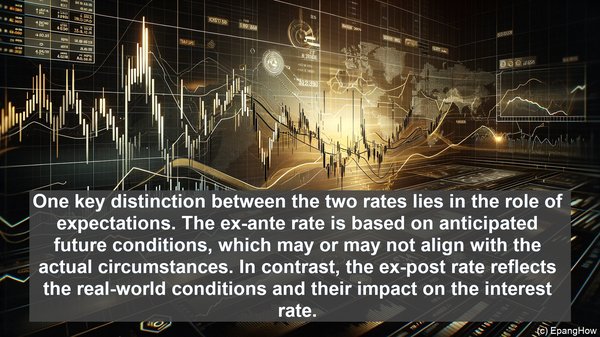Introduction: The Significance of Real Interest Rates
Hello everyone! Welcome to another insightful article. Today, we’ll be exploring the intriguing world of real interest rates. While interest rates are commonly known, the ex-ante and ex-post real interest rates might be new terms for many. So, let’s get started!
Defining the Ex-Ante Real Interest Rate
The ex-ante real interest rate is essentially the expected or anticipated real interest rate. It’s the rate that borrowers and lenders consider when entering into a financial transaction. This rate is based on future expectations, such as inflation projections and economic forecasts.

Understanding the Ex-Post Real Interest Rate
On the other hand, the ex-post real interest rate is the actual real interest rate that is realized after a financial transaction has taken place. It’s the rate that is determined by the actual inflation rate and other economic factors that materialize during the loan or investment period.

The Role of Expectations
One key distinction between the two rates lies in the role of expectations. The ex-ante rate is based on anticipated future conditions, which may or may not align with the actual circumstances. In contrast, the ex-post rate reflects the real-world conditions and their impact on the interest rate.
Implications for Borrowers and Lenders
For borrowers, the ex-ante rate is crucial as it helps them assess the cost of borrowing and make informed decisions. Lenders, on the other hand, consider the ex-ante rate to evaluate the potential return on their investment. However, it’s the ex-post rate that ultimately determines the actual cost or return.
The Impact of Inflation
Inflation plays a significant role in the difference between the two rates. If inflation turns out to be higher than expected, the ex-post rate may be higher than the ex-ante rate, resulting in an increased cost for borrowers. Conversely, if inflation is lower than anticipated, borrowers may benefit from a lower ex-post rate.
Applications in Financial Markets
The distinction between the two rates is of particular importance in financial markets. It influences the pricing of various financial instruments, such as bonds and loans. Moreover, it also impacts investment decisions, as the ex-ante rate guides investors in assessing the potential returns of different assets.
